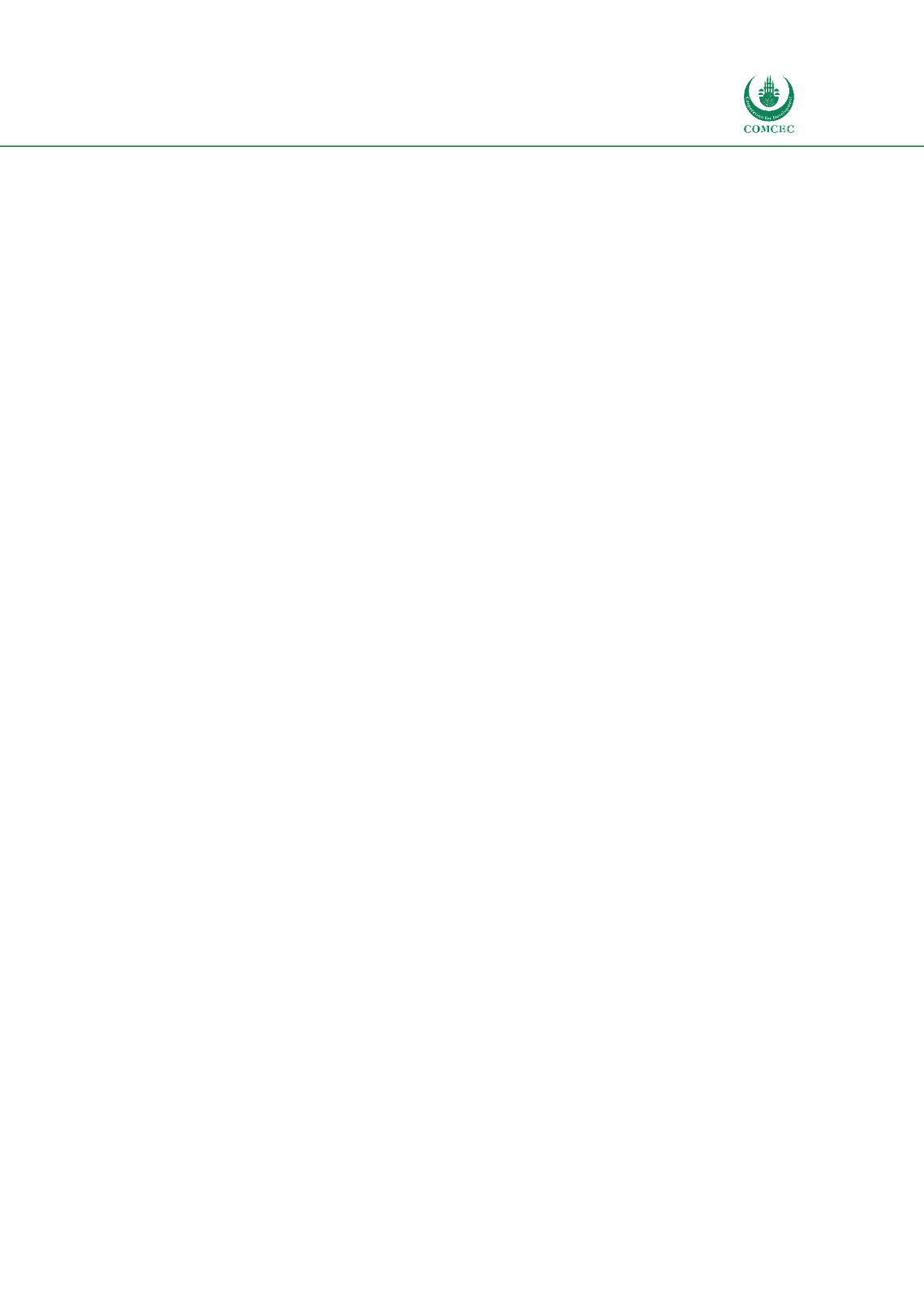

Facilitating Trade:
Improving Customs Risk Management Systems
In the OIC Member States
119
randomly selected operations in the inspection channel and priority processing of those
operations; Possibility to obtaining binding advance information;
B Category: A category Benefits; Establishment within the Customs service of
mandatory time limits on processing for all stages; Possible conclusion of protocols to
deal with special circumstances; Reduction and rationalization of post-clearance audits;
C Category: A and B category Benefits; Possibility of replacing the usual financial
securities (e.g., bonds, cash deposits) with a company surety; Relocation of physical
controls to the undertaking’s premises; Granting of simplified export procedures;
D Category: Be granted the Citizen and responsible company label.
The USAID is providing technical assistance in this area. In April 2017, U.S. Customs and Border
Protection and Senegal Customs signed a Customs Mutual Assistance Agreement.
5.2.4
Risk Management Process in Senegalese Customs
The SCC has defined several levels of risk, as an important part of the risk management process
that rates the risk profiles targeting risky consignments. The level of risk is determined by the
score assigned to each of the indicators for every transaction. This score is obtained by
combining several assessment criteria such as the importer's history, transportation mode,
origin, description of the goods, local regulations, etc.
The Inter-Services Committee is constituted by members of the Intelligence Unit, the Decision
Support Unit, and the Control Clearance Unit and meets monthly to review the statistics and
maintain the parameters and criteria of risk profiles.
A steering committee of SIAR, mixed COTECNA/SCS, meets regularly to adapt the CRM system
to the operational requirements. In reality, two risk management systems coexist. The first,
SIAR, is based on the analysis of data from the PVI (Import Verification Program). It determines
which imports undergo pre-shipment inspection and channeling, by a verification certificate,
and assigns one of the five control circuits at the destination. The second one concerns the non-
PVI imports which are managed by the TAME system. 70 % of imports "escape" the SIAR and
therefore do not benefit from the COTECNA analysis of risk. Imports below FOB CFAF 1 million
are excluded from the PVI. The importers do not have to file a pre-import declaration. Imports
whose CIF value is less than CFAF 3 million (and more than CFAF 1 million FOB value) are
subject to control, but not before boarding. For pre-import declaration over 3 million CFAF
control is carried out before boarding. The verification certificate is then transmitted
electronically to the customs through the GAINDÉ system.
The SIAR integrates two levels: the upstream SIAR and the downstream SIAR. The upstream
SIAR determines the type of intervention of the company COTECNA before loading the goods,
based on the analysis of the IPR (Prior Declaration of Importation) and guides the imports to
three channels (Figure 42):
The blue channel for goods excluded from COTECNA's intervention;
The green channel for documentary check;
The yellow channel - check the tariff classification and valuation analysis;
The red channel involves a physical check of goods before boarding.
The objective of the SIAR-upstream is to limit the number of physical inspections before
boarding to 10% of import operations. The downstream SIAR determines the type of Senegalese
customs intervention at the arrival of the goods for those subject to a VA.
















